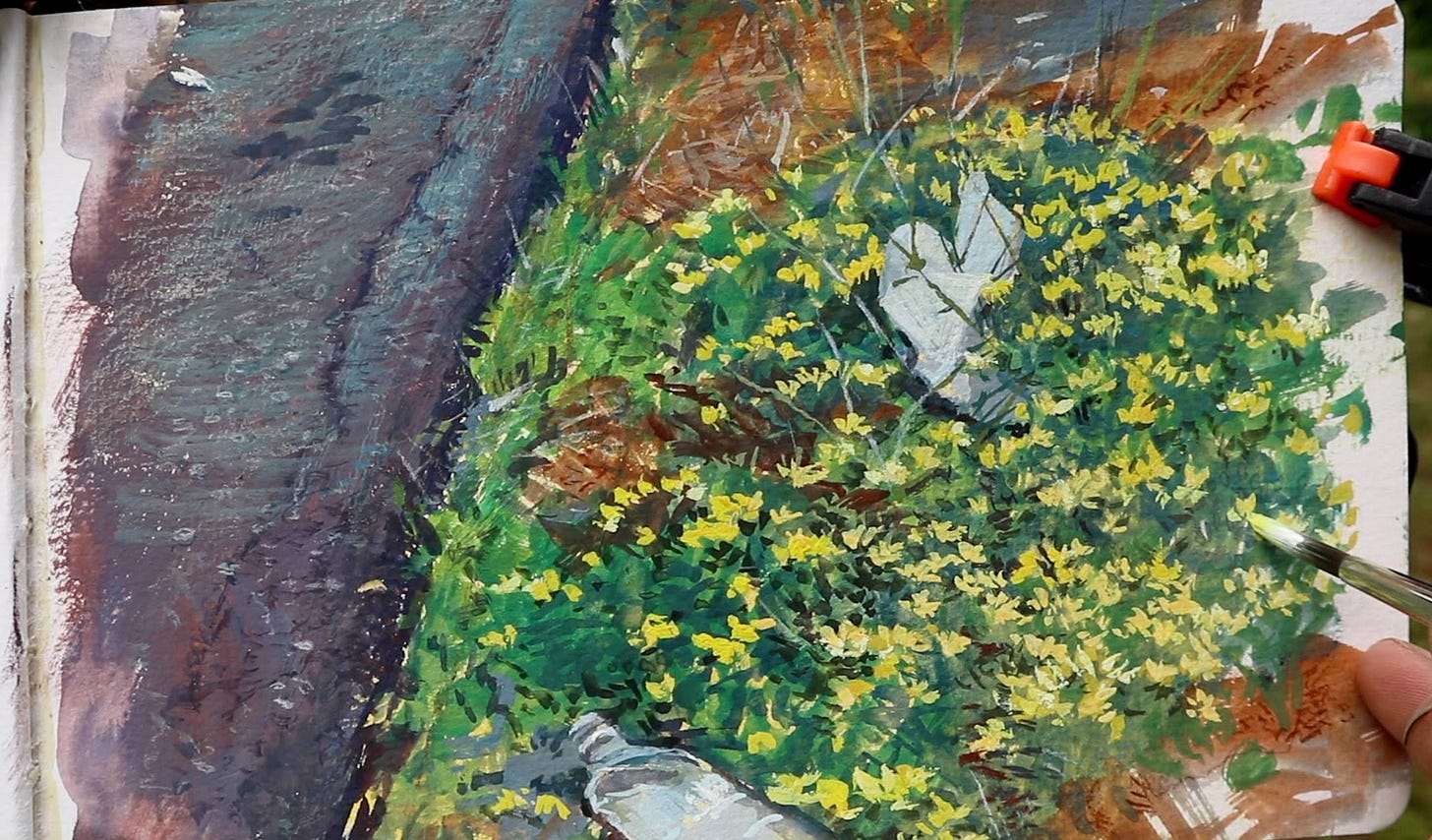In Search of the Non-Motif
Looking for inspiration in roadside trash and parking lots
I tried painting an unloved corner of my world: a vacant piece of ground strewn with weeds and trash at the edge of a parking lot.
"Anything that excites me for any reason, I will [document]; not searching for unusual subject matter, but making the commonplace unusual." (Paraphrasing photographer Edward Weston)
(Row of gumball machines, painted in casein in a laundromat.)
Elevating commonplace subjects goes back to the Realist movement in France in the mid-19th century. Emile Chartier said of Balzac: "His genius consists in taking the commonplace as his subject and making it sublime without changing it."
I like to call such subjects “non-motifs.” Unlike a picturesque motif, a non-motif is unconventional, unexpected, but also commonplace and recognizable. If you try googling the term “plein-air painting” you probably won’t find a single car or fast-food restaurant or utility pole, despite the fact that those things are all around us.
Why not? Is it because they are intrinsically ugly or because we haven’t yet found the beauty in them?
Paintings can serve to awaken us to the mystery of the world we actually inhabit, such as parking lots, supermarket interiors, gas stations or back alleys. Everyday subjects have a weird luminous power over my imagination. When I begin to paint them, I feel as though I have set foot on an unexplored continent.
Tips for Succeeding with Non-Motifs
Keep reading with a 7-day free trial
Subscribe to Paint Here to keep reading this post and get 7 days of free access to the full post archives.





